[Original by Mariko OMURA, Cambodia Project (October 13, 2020); Translated by M. Kanai/H. Lai]
Current situation of COVID-19 in Cambodia
I am Mariko Omura, the JVC Cambodia Office Representative. In my last article, I reported that the New Year’s Holidays supposed to be in April was postponed to August because of the new coronavirus. During the nine-day holidays, the domestic migrants reached to 1.4 million due to the rush period of home visits and travelling. However, new cases of infections were limited only to those who returned from overseas. In general, Cambodian people are enjoying calm and peaceful days.
Going through the days without raining
In March and April, JVC Cambodia dug eight reservoirs and three wells in the selected villages in the project. I would like to report the states of the villages after completing the excavation works.
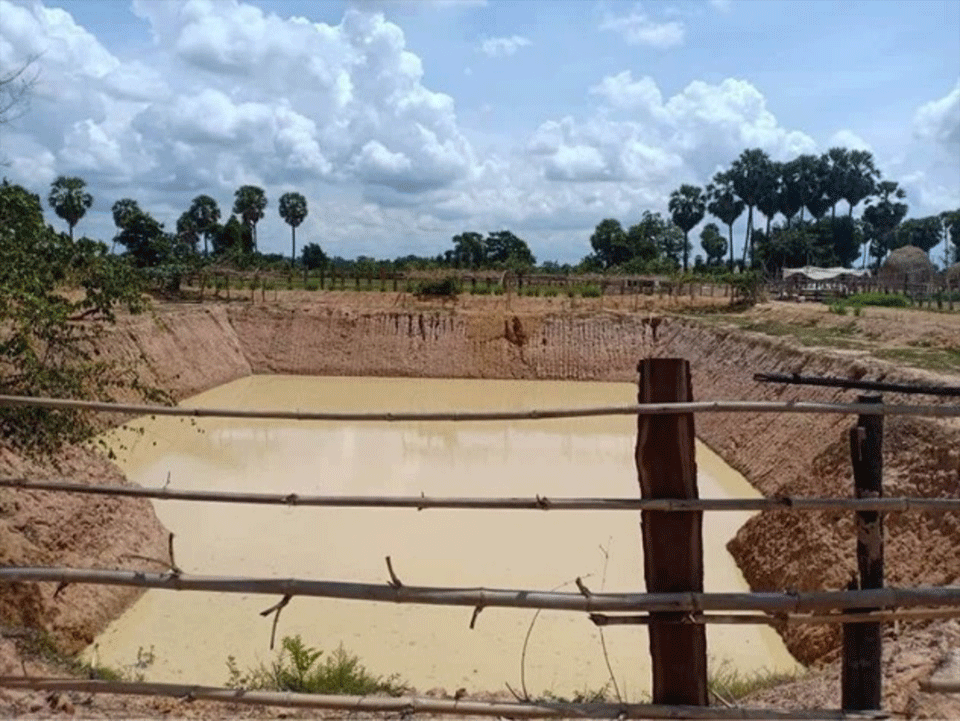
The two reservoirs were excavated in April in the same village (photos taken on July 20).
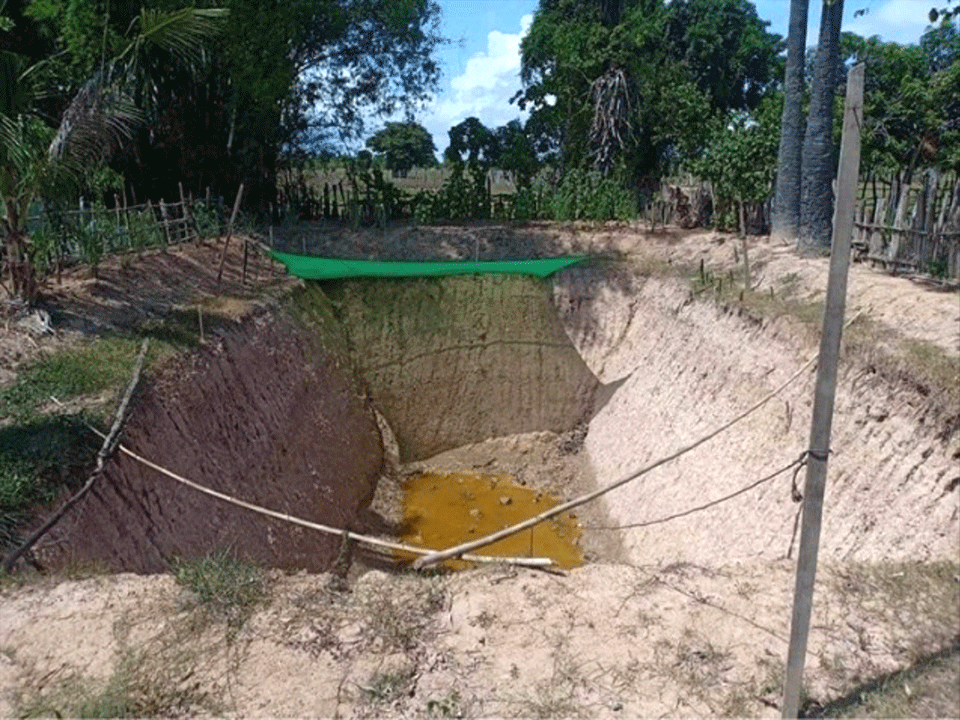
This year, the rainy season came late all over the country. In some areas it did not rain till the end of July. JVC staff and villagers were so worried about the rice paddy fields and kitchen gardens. Please look at the photos taken on July 20. The reservoir on the top started to store rainwater steadily in early July and reached the full level in late July. On the other hand, the water level of another reservoir was quite low in late July (bottom photo) as the rainfall was small in this area. The village principle and villagers were puzzled by the unprecedented scarcity of rain this year.
In August, it finally started raining. We were all relieved to see that the reservoir was filled with water (bottom photo, taken on August 10). In rural areas where people enjoy the blessing of nature and live without human-made water supply, a climate change can greatly affect their lives.
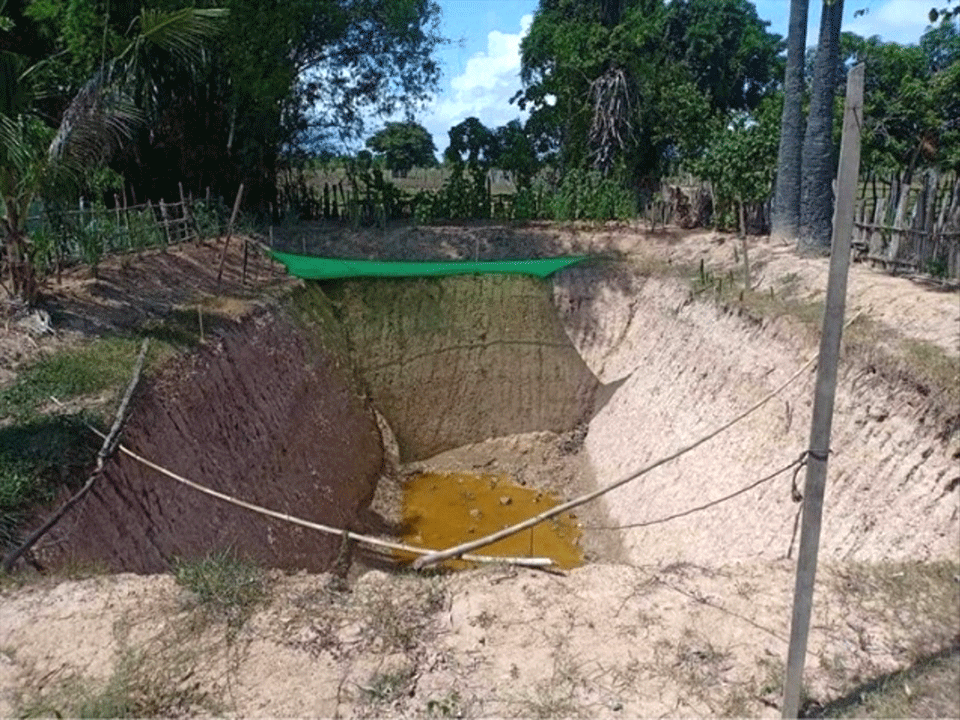
On July 20 (top) the water level of one of the reservoirs was so low that we were worried, but the reservoir was almost filled on August 10 (bottom).
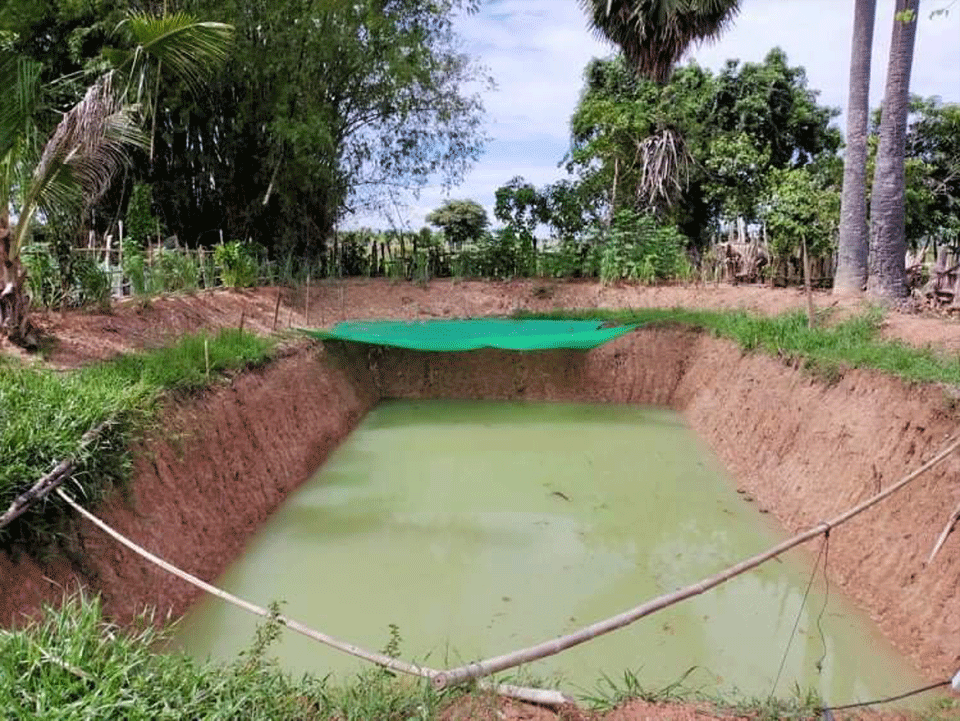
Changes happening around the reservoir (1): Nem Sornn
We started using the rainwater stored in the reservoir in kitchen gardens. The photo shows the surroundings of a reservoir dug by JVC in the past. With a single reservoir available, the residents can start small-scale kitchen gardens that bring significant changes to the landscape in the area. Delightful changes occurred around the reservoirs excavated in March and April. Let us introduce the case of Nem, one of the residents in this area.
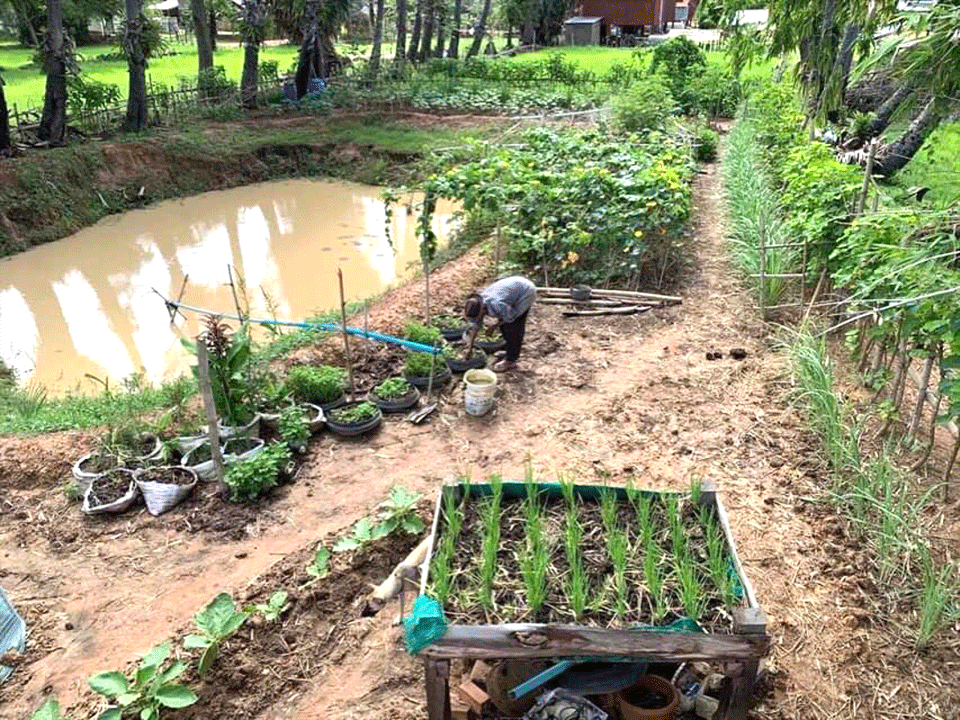
Vegetables were harvested in the place used to be a vacant lot!
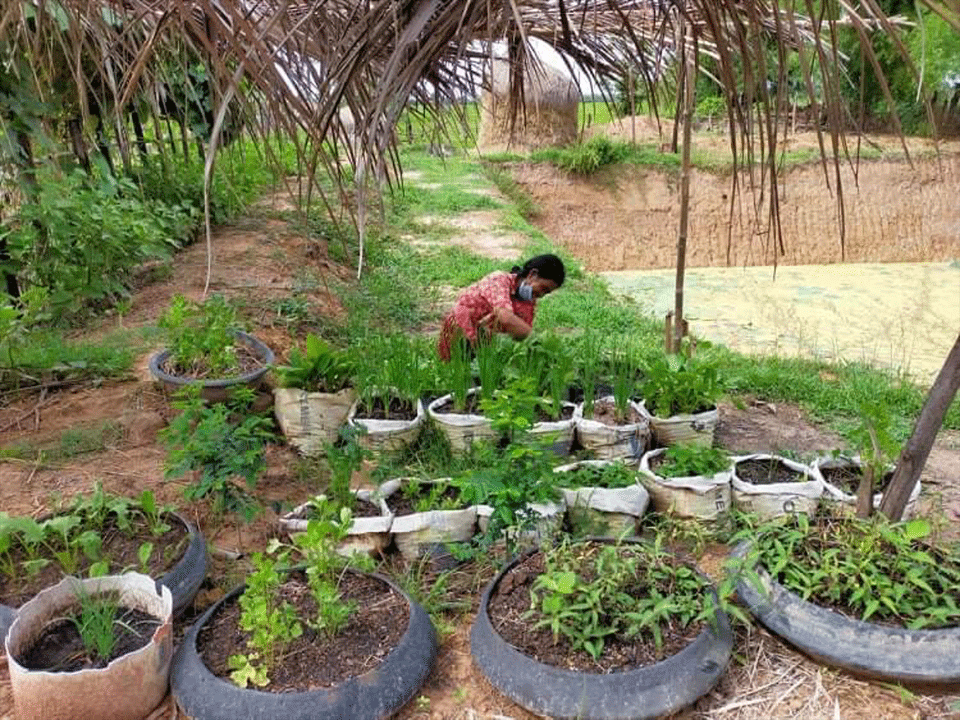
She started to prepare her kitchen garden little by little. The reservoir on the right was dug this year (early August).
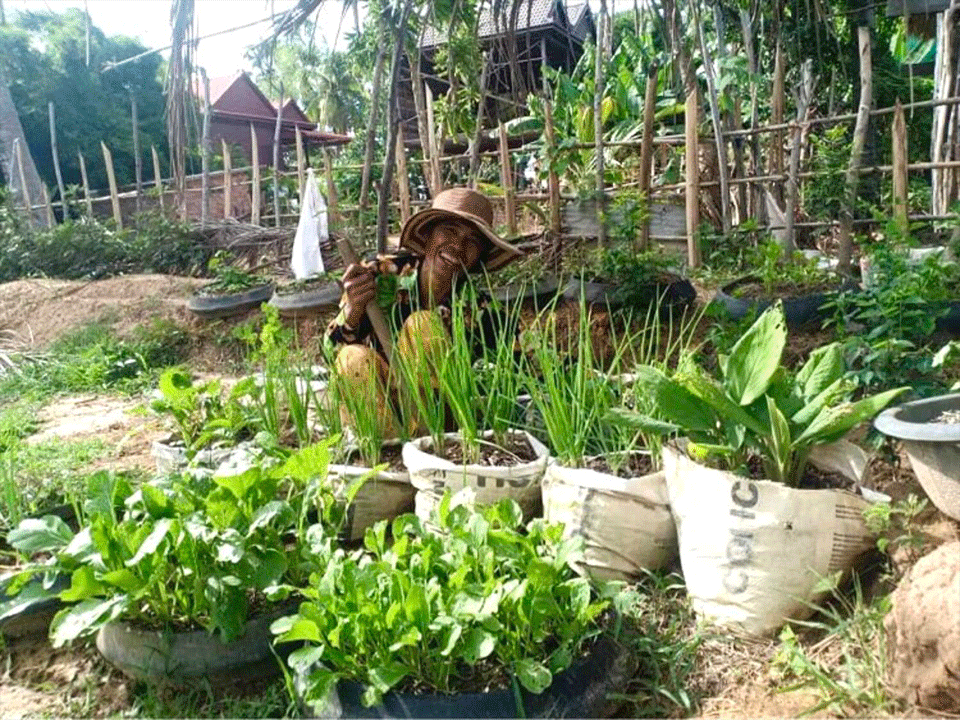
Vegetables are steadily growing (late August).
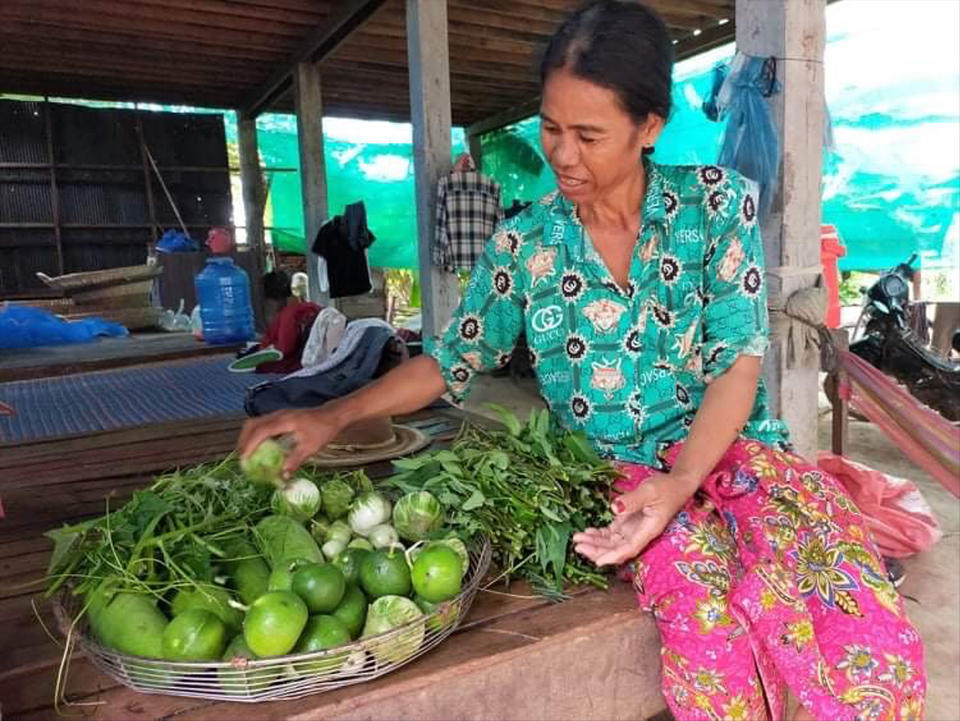
She can harvest vegetables such as eggplants and leafy greens almost every day. Her family consumes some of them, and the surplus are sold to earn cash (September).
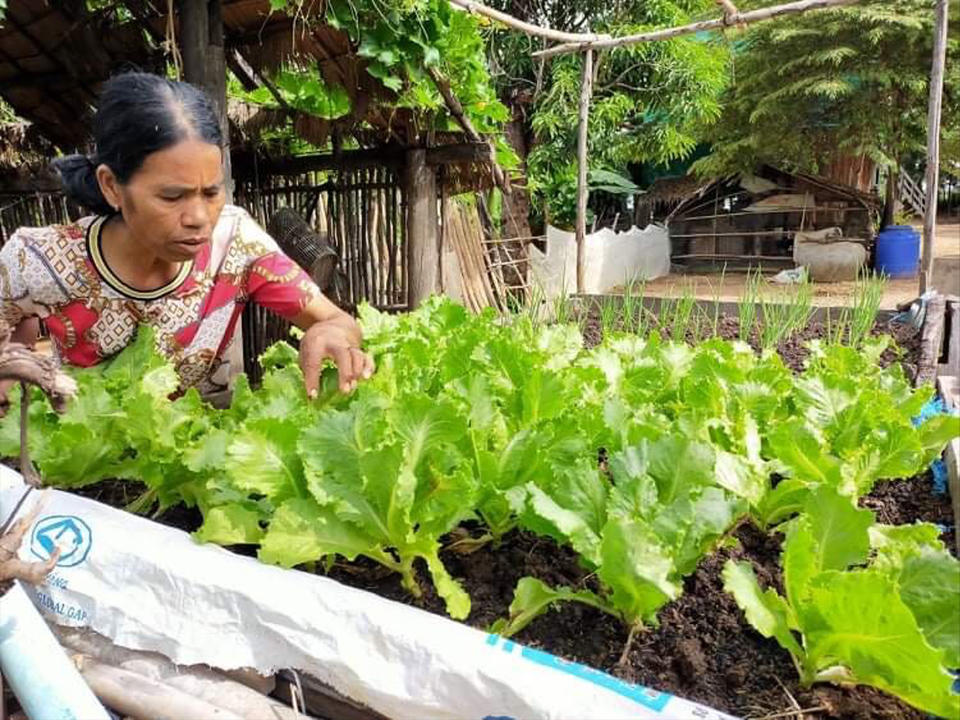
A fruit of day-to-day diligent work by Nem. These vegetables are new to her. JVC staff share the joy to grow them together.
Comment by Nem Sornn
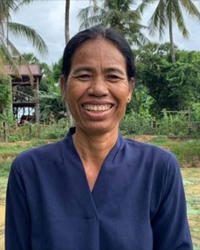
“Thanks to the reservoir, we can get enough water to grow vegetables. My husband is working away from home at Shem Reap. When he came home, he was very surprised and happy to see our growing kitchen garden. I am very glad that he can take vegetables with him when returning to the town. I hope he can pay attention on his health.”
Changes happening around the reservoir (2): Seum Thorng
Seum Thorng lives near another reservoir that was dug by JVC in April.
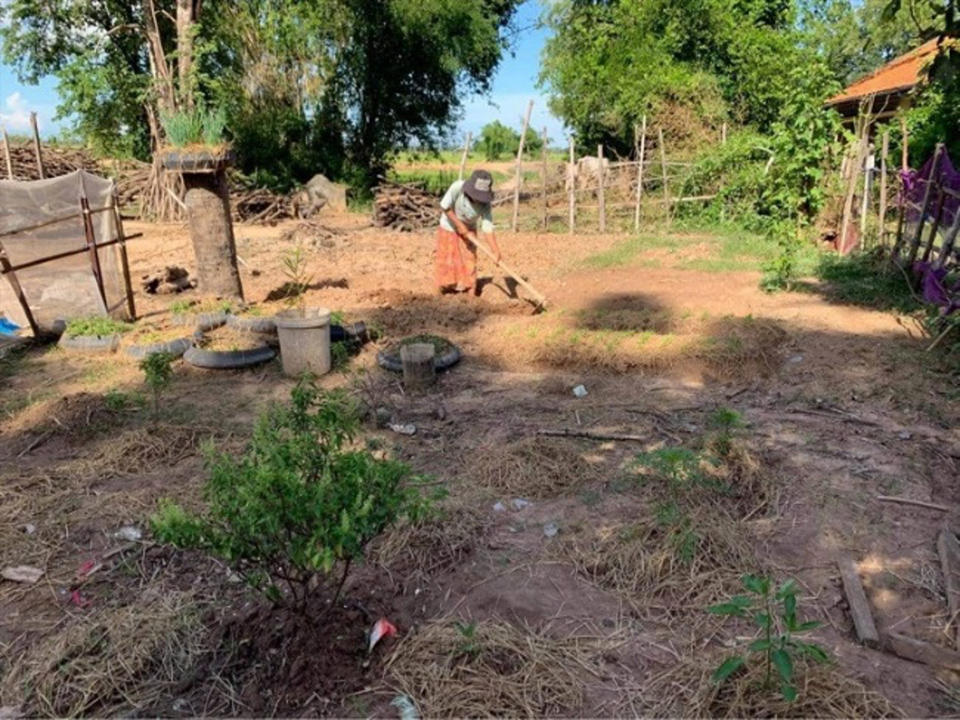
She and JVC staff started to prepare a kitchen garden in a vacant lot together (July).
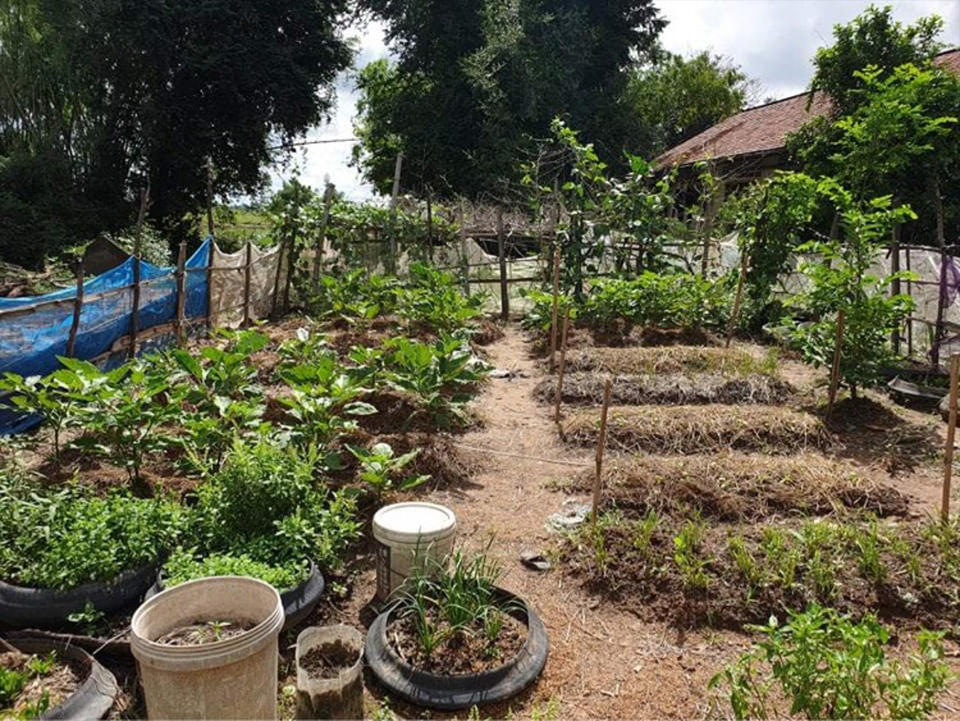
This is amazing! Look at what happened to the vacant lot! Eggplants, beans, melons, and herbs are growing every day (September).
Comment by Seum Thorng
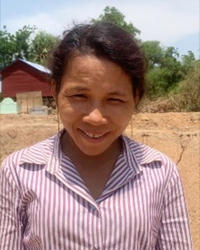
“Preparing a kitchen garden required a lot of work such as tilling land and making compost. We were lucky to get assistance from JVC staff. Now, we can harvest various kinds of vegetables and the harvest helps our family save budgets. Except the kitchen garden, we can also use the water from the reservoir in housekeeping like bathing.”
What happened about the wells afterwards?
In the areas with no land space available for reservoirs and far from water sources, JVC dug wells to supply water for agricultural use. Later quality tests of the water, however, showed that it is drinkable after proper treatment such as boiling. So, some people use it for drinking as shown in the photos.
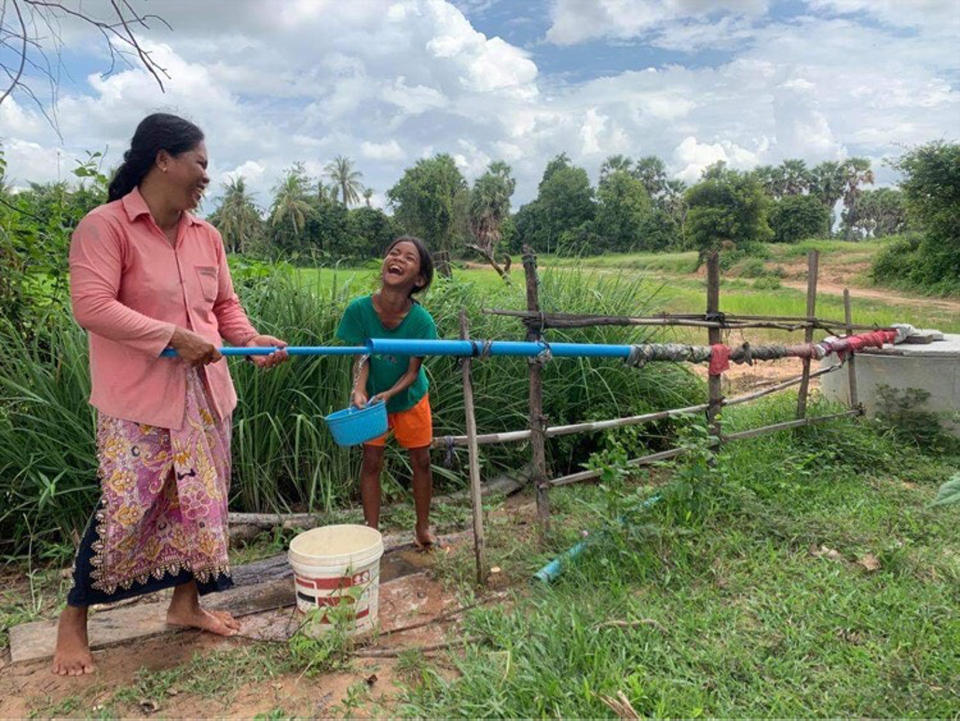
Drawing water from the well.
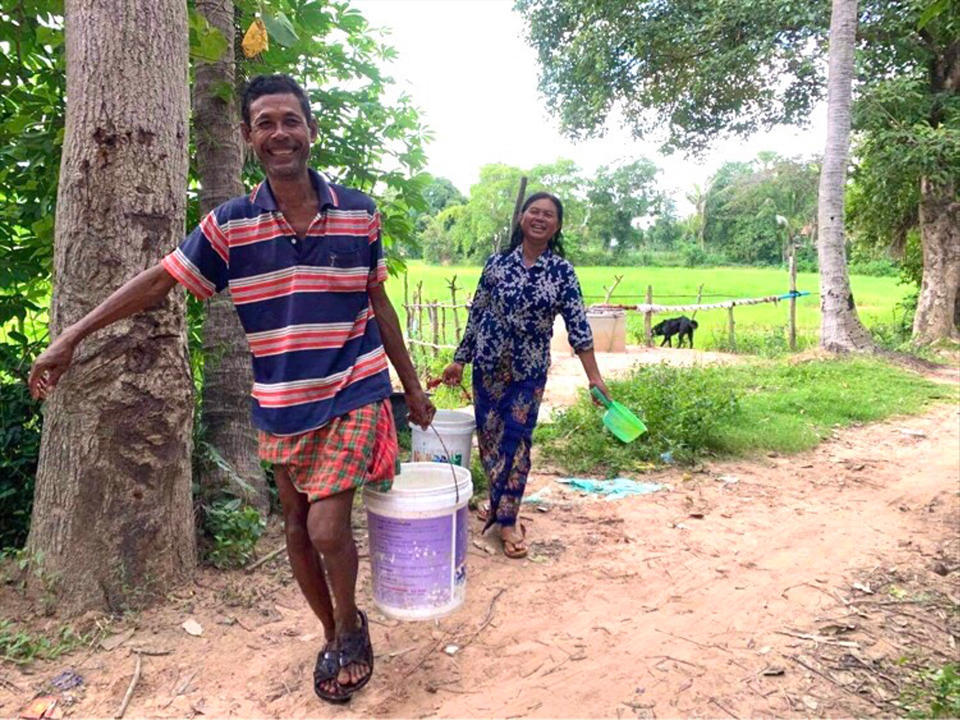
Carrying…
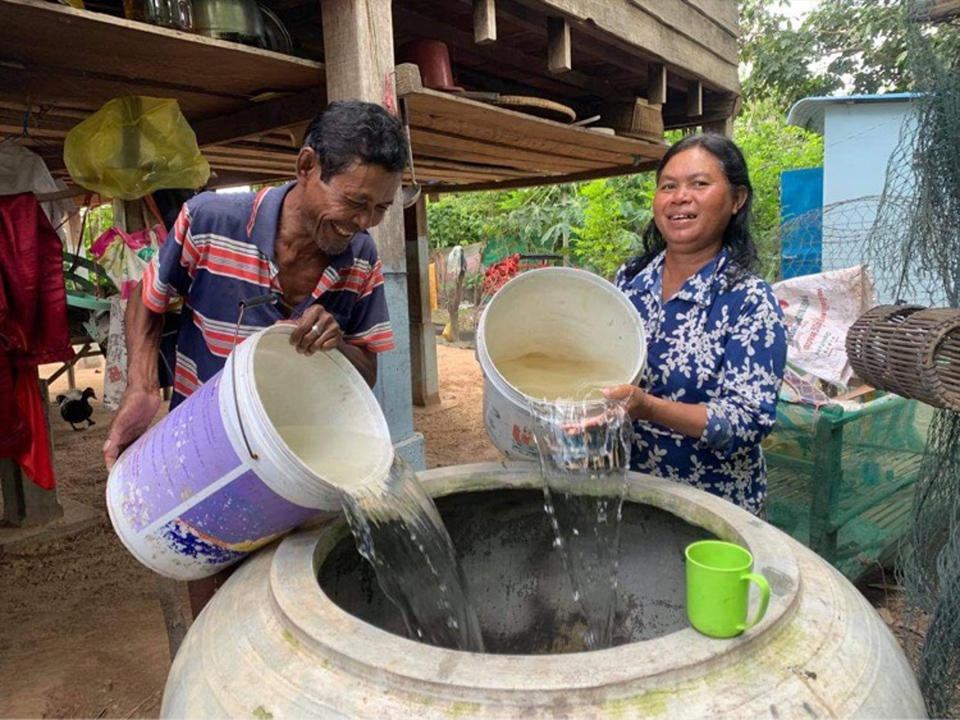
And store it in a water pot at home.
With the assistance of our many supporters, we can accumulate small changes in the project sites step by step. We are thankful for your continuing support.
Share This: